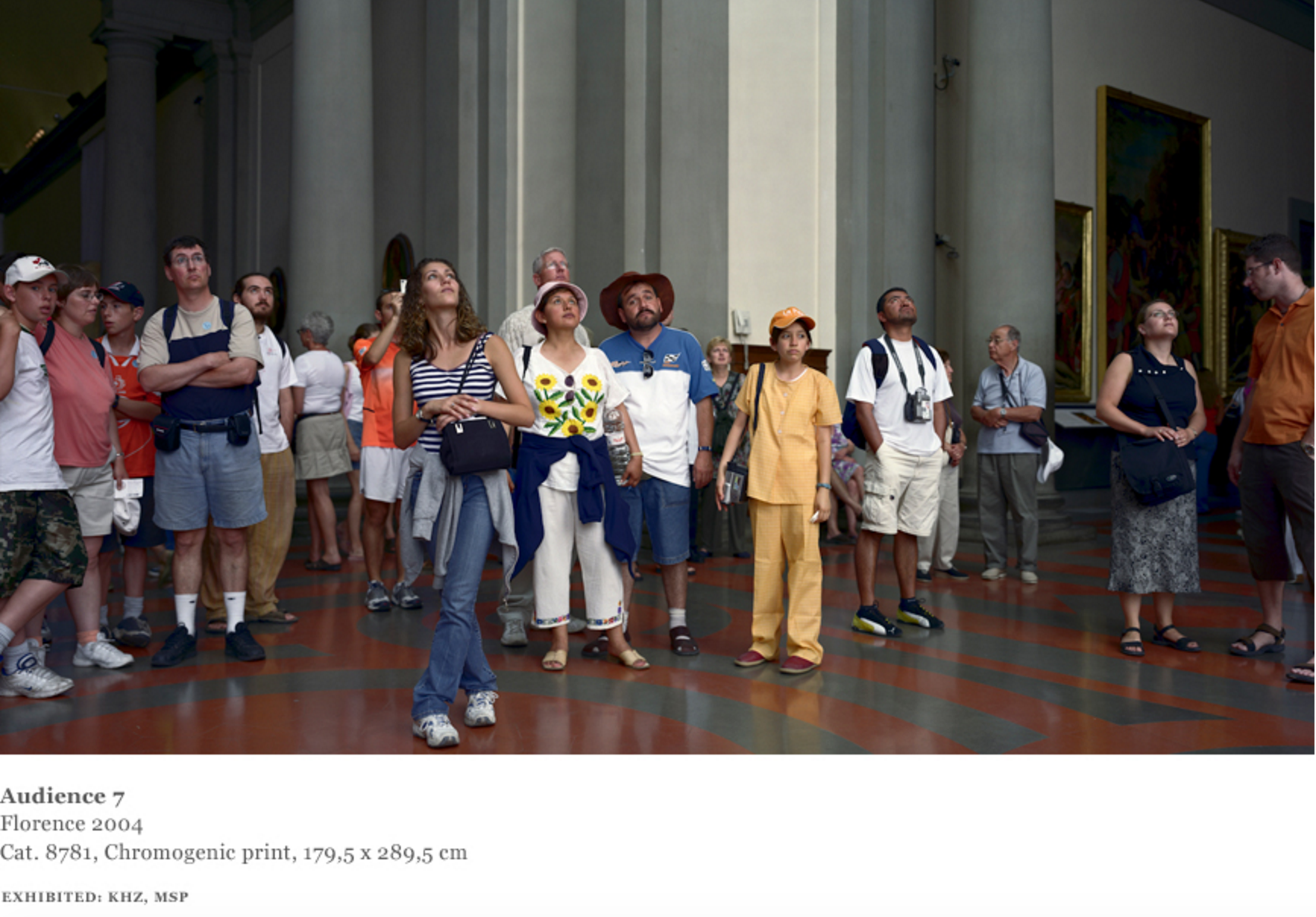“…criticism doesn’t mean delivering petty, ill-tempered Simon Cowell-like put-downs. It doesn’t necessarily mean heaping scorn. It means making fine distinctions. It means talking about ideas, aesthetics and morality as if these things matter (and they do). It’s at base an act of love. Our critical faculties are what make us human.” -Dwight Garner
“What the critic has to give is the fruits of looking laggardly, an attention that appears in increasingly lesser quantities today, a long and sustained commitment to coaxing meaning from mute objects” -Anya Ventura
Is critical distance measured in the space between critic and viewer or between critic and art? These two quotes address whether the critic includes oneself as a fellow spectator and how that shapes their teetering priority to either the art, the viewer, or neither.
If art without a spectator is nothing, Dwight Garner’s definition makes sure the spectator knows they are everything. In the high culture version of an it’s complicated relationship, Garner defines criticism at its core as an act of love. Love, not expertise, not taste, not knowledge, is the driving force behind unlocking the valuable ideas within all forms of art. While the head and the heart are both equally capable of interpretation, Garner urges their equality of experience as well.
Garner includes the critic in the world of the spectator, hinting at an autonomy long lost to the insularity of many art markets. While his warm and fuzzy definition ultimately leaves the question of what place exists for the professional critic in a world full of capable spectators, I really didn’t mind him not answering. He emphasizes the democracy of his definition through pointedly stating “our critical faculties make us human” while being careful not to suggest passive criticism exists. In direct opposition to the “Simon Cowell-like” disposition now associated with criticism, Garner does not paint the critic as reactionary but instead as reflexive. In order to construct a proper critique out of fine distinctions, Garner is suggesting a level of commitment. Commitment to let yourself be the first filter before any wall text or gallery guide (…but still read them), commitment to ruminate, commitment to listen to how you feel, commitment to sit on the bench rather than walk to the next piece. After all, what’s love without commitment?
While Anya Ventura explicitly uses the keyword of commitment to signal a true critic, her view of critical commitment is not as rooted in populism or excitedly optimistic as Garner’s. Instead, she romanticizes the critic’s connection to art so separately from the spectator’s connection that they effectively exist in different realms of reality. In stark contrast to Garner’s communitas of spectator and critic as they experience liminality together hand-in-hand through white cube galleries everywhere, Ventura elevates the cultural critic as one who lives in a betwixt state with the art. An inaccessible state to mere spectators where critics act as snake charmers laboriously playing their instruments, hypnotizing until their “long and sustained commitment” finally ennobles them to “coax meaning from mute objects.”
Yes, a little dramatic of an interpretation I will admit, but something about the idea of mute objects seems to undermine the whole basis of criticism. All objects are overflowing with intent and meaning, maybe even screaming. While a metaphorical muteness leaves the spectator lacking agency, a literal muteness snatches away any agency from the art.
At the end of the day, looking and thinking with attention and commitment is where both authors agree. But to Garner, this is the moment spectators can dig into, the moment where they are more than a set of eyes, as Ventura suggests, but complex beings ready to unpack their baggage of emotional, experiential humanity. At this same moment, to Ventura, a spectator’s gaze rests easy and empty from a place of consumption (let’s imagine from a trough if we want to be dramatic here) —it is the critic who has the gifted ability to not just consume, but digest.
While both authors agree that commitment, experience, and depth constitute cultural criticism, their other differences (especially the role of spectator) stem more from their ideas of culture rather than criticism. Ventura reads as aggressively Arnoldian at times, striving for perfection through logged hours and lamenting “opinions no longer hold the same currency.” Garner is still aware of all the technological and social changes Ventura is alluding to yet finds a way to include them in the field of cultural criticism rather than lovingly tucking in the old definition to rest easy as time marches onward.
Cultural criticism must be defined by its relationship to both the art as well as the spectator—so why not be a little nicer to them both?

408 Comments
new release OC claim Free bonus up to 777 just sign up and download the app..withdrawable!!! NO DEPOSIT REQUIRED!!! just reach P777 amount or higher!!!
click and register now!
It’s better to be a lion for a day than a sheep all your life. https://hi88com.biz/
Try to be a rainbow in someone’s cloud. w88
This article is very information thanks for sharing such articles. คาสิโนมือถือ
When you are loved by someone, you have strength. https://abc8mb.com/